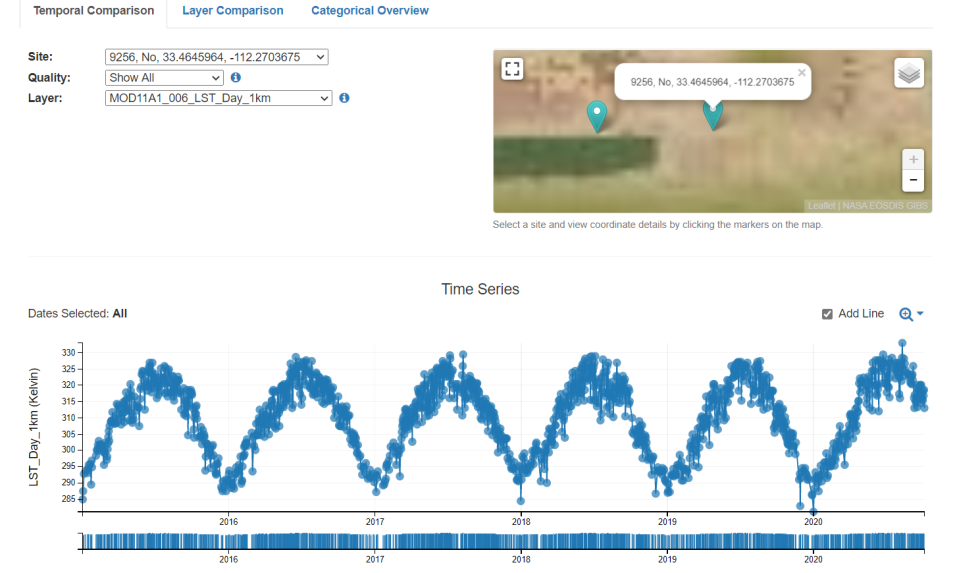The volume of data in NASA’s Earth Observing System Data and Information System (EOSDIS) never stops growing. On September 30, 2021, the total amount of data in the EOSDIS archive, including data migrated to the cloud, was 59.24 petabytes (PB). On September 30, 2022, this volume was 71.64 PB—an increase of 12.4 PB in one year. By 2030, the volume of data in the EOSDIS archive is projected to surpass 500 PB thanks to high-data-volume missions such the Surface Water and Ocean Topography (SWOT) mission, which launched in December 2022, and the forthcoming NASA-Indian Space Research Organization Synthetic Aperture Radar (NISAR) mission, which is scheduled for launch in 2024.
Yet, as the EOSDIS archive grows and grows, data users are looking for ways to simplify and streamline their methods of data discovery and analysis. This is precisely what the Application for Extracting and Exploring Analysis Ready Samples (AppEEARS) tool from NASA's Land Processes Distributed Active Archive Center (LP DAAC) was designed to do.
AppEEARS provides access to a wide array of geospatial data products (e.g., elevation, land cover, soil moisture, vegetation, and daily meteorological variables) for the contiguous U.S. and the world from several EOSDIS Distributed Active Archive Centers (DAACs), including the LP DAAC, the National Snow and Ice Data Center DAAC (NSIDC DAAC), the Oak Ridge National Laboratory DAAC (ORNL DAAC), and the Socioeconomic Data and Applications Center (SEDAC). In doing so, it saves users a lot of time by enabling access to multiple datasets from the same platform. This array of datasets includes a wide range of environmental variables derived from data collected by the Moderate Resolution Imaging Spectroradiometer (MODIS) instrument aboard NASA’s Terra and Aqua satellites, the Visible Infrared Imaging Radiometer Suite (VIIRS) aboard the joint NASA/NOAA Suomi National Polar-orbiting Partnership (Suomi NPP) satellite, the Ecosystem Spaceborne Thermal Radiometer Experiment on Space Station (ECOSTRESS) on the International Space Station, NASA's Soil Moisture Active Passive (SMAP) mission, Daymet, Harmonized Landsat Sentinel-2 (HLS), and socioeconomic variables from the Gridded Population of the World Version 4 (GPWv4) collection.
AppEEARS allows users to subset data spatially, temporally, and by layer, significantly reducing the amount of data and time they need for analysis. Two types of sample requests are available: point (geographic coordinate pairs) and area (vector polygons).
The AppEEARS Point Sampler allows users to input tens and even hundreds of geographic coordinates, select specific data variables of interest from NASA Earth science data, and set constraints to receive time series information. AppEEARS Point Sample request outputs include not only files containing the extracted data values and their associated quality information, but also important supplementary files containing information including links to the source data files and summary statistics for the data extracted. Sample request outputs are downloaded as comma separated value (CSV) files, which significantly reduce the amount of data users have to download to their local machine. Users also can explore data values, trends, and relationships within the AppEEARS interface using a variety of interactive charts and graphs.

